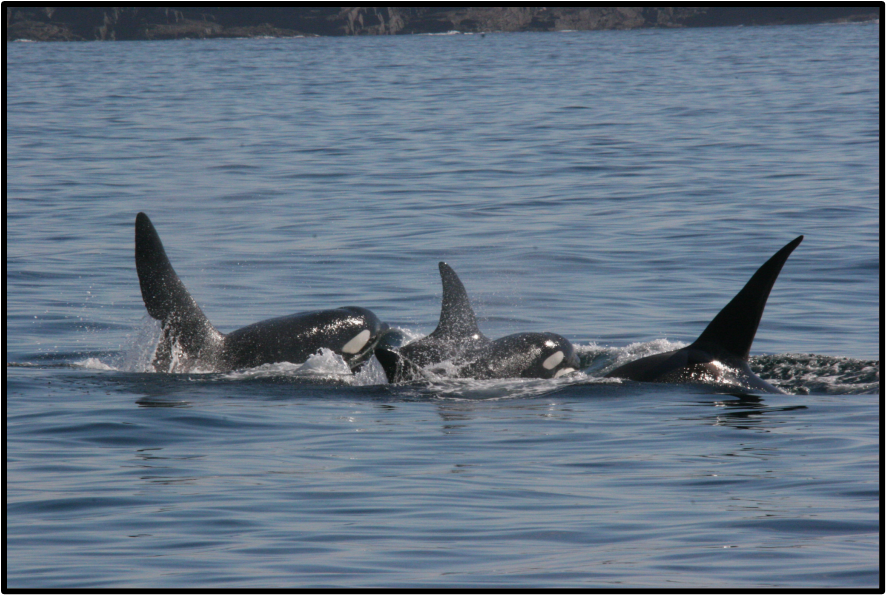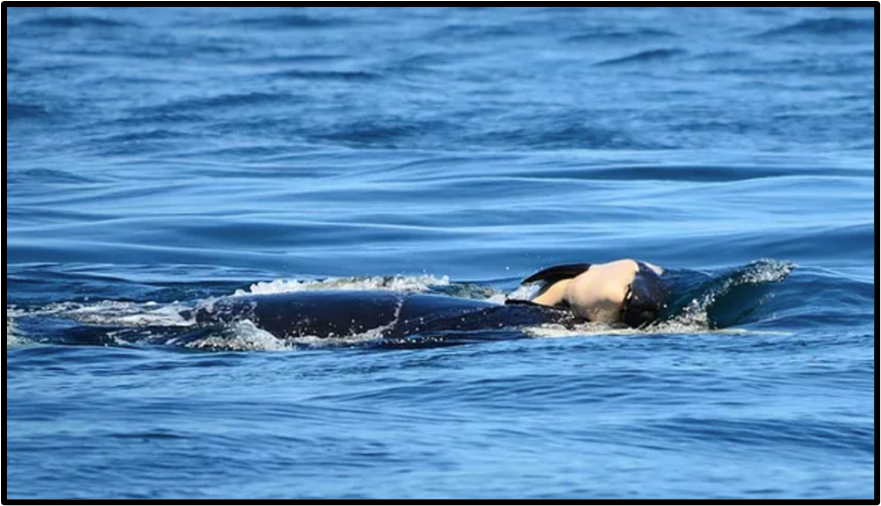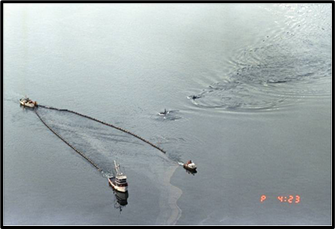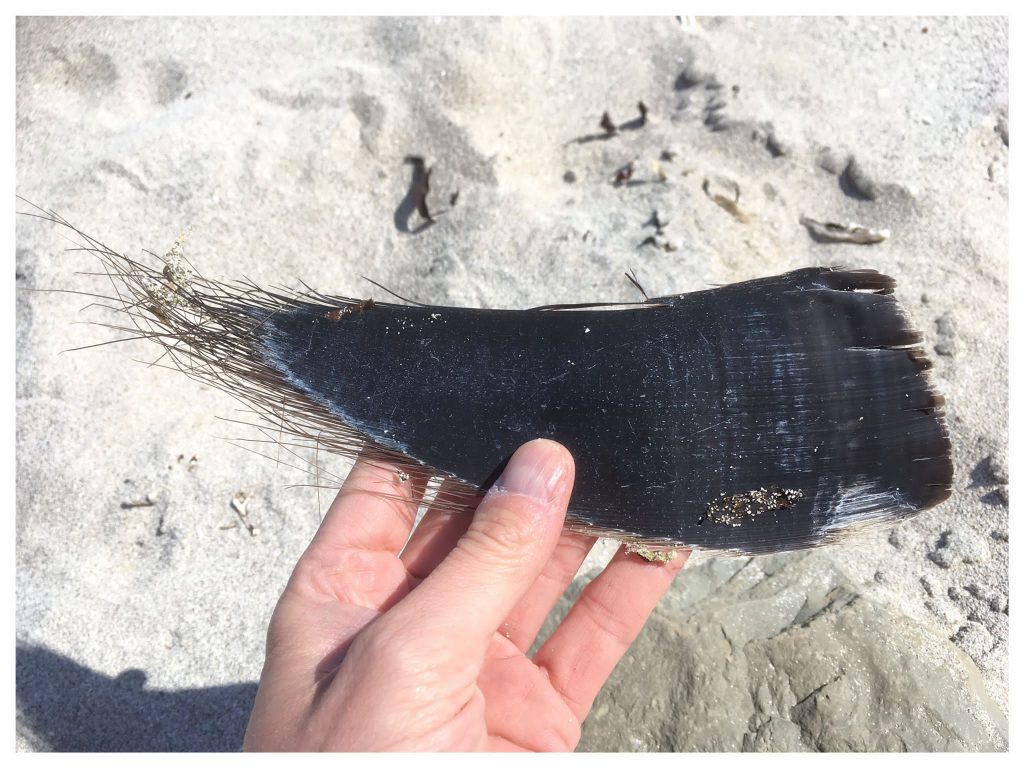Welcome back to our daily Orca Watch blog. Firstly, we got national recognition last night as Iolo Williams from BBC Springwatch broadcasted live from the Isle of Mull. He spoke a little about the West Coast Community and John Coe and Aquarius before mentioning our citizen science event, Orca Watch and how everyone is able to get involved. Thanks to BBC Springwatch for the feature – we all need to continue to recognise that citizen science projects, such as Orca Watch, are key to protecting the species on this planet. If you missed our mention you can watch it here, starting from around 33:30 into the program.
Back to what is happening up here! Another quiet day but again, we are thankful for the weather with the sun shining and great conditions. Keep reading to find out what we have seen today..
Key sightings update
Last night we had reports of six Risso’s dolphin at Thurso Bay heading west and a small group of porpoise headed towards Duncansby Head.
Thursday 2nd June
Another quiet day today with lots of seals spotted bottling and banana-ing at Gills Bay. A few porpoises were seen from Dunnet Bay, Duncansby Head and off Muckle Skerrie throughout the morning too.
We had a couple of possible fin sightings. A possible orca fin was seen from Gills Bay ferry heading towards Hoy, but with just a fleeting glimpse of what was thought to be a possible tail fin we couldn’t be sure and didn’t hear anything more after 12:30. We also all got a little excited about a large active gannet frenzy and possible blows sighted from Gills Bay. With further look through a scope from Dunnet Head for confirmation no fins could be seen, and the gannets then started to disperse.
We had a small pod of 4-6 Risso’s individuals sighted off Latheronwheel and further porpoise seen off of Muckle Skerrie. Looking towards Portgower, two whales were spotted and predicted to be Humpbacks although no confirmation as of yet as we didn’t see the tail. Two Minke whale and two harbour porpoises were seen at around the same time at 14:30.
We did have a sighting in Shetland today by Karen Hall who spotted orca from her house, around 1km out of Levenwick Broch.
We had a small pod of 4-6 Risso’s individuals sighted off Latheronwheel and further porpoise seen off of Muckle Skerrie. Looking towards Portgower, two whales were spotted and predicted to be Humpbacks although no confirmation as of yet as we didn’t see the tail. Two Minke whale and two harbour porpoises were seen at around the same time at 14:30.
Just after 4pm we had three Risso’s dolphin at Dunnet Head quite close to shore. We also had two porpoise off the last ferry of the day and our friends over in Orkney have a definite porpoise at Strongness Harbour. We also had reports from Karen Hall in Shetland of orca, Minke whale, harbour porpoise and possible Risso’s dolphin throughout the day.
With little to report on from the mainland, I am delighted to feature one of our interns back in New Quay, Celia, with her blog post on the threats facing this species we are all so keen to get a glimpse of.
The last of the orca: threats to the ocean’s apex predator
Killer whales or orca are the apex predators of the ocean. The largest members of the dolphin family, they have been known to hunt fish, seals, sharks and even the largest animal on the planet, the blue whale. They are extremely intelligent, enigmatic, and diverse with ten known ecotypes possessing their own culture, dialect, and prey preference. They have captured the imagination of humanity for centuries. However, these incredible animals are not invulnerable, and they have one main threat, us.
In 1989, there was a catastrophic oil spill in Prince William Sound, Alaska. The event, called the Exxon Valdez spill, was devastating to the local wildlife. A ¼ million seabirds, 3000 sea otters and billions of fish were killed, and fishing stocks collapsed. Another species affected was the local pods of orca, mainly the AB resident pod and the AT1 transient pods losing 33 and 44% of their members respectively. The resident pod still hasn’t recovered to pre-spill numbers, but things were far worse for the transients. Since the spill not a single calf has been born to this population due to the loss of reproductive females and possible infertility caused by pollution. Now with its remaining females on the other side of the menopause and past reproductive age, this unique and genetically distinct group faces certain extinction.
But it is not just overseas orca affected by us. Sadly, our own resident population is heading for the same fate. The Atlantic Type 2 orca, also more commonly known as the West Coast Community pod, are now down to eight members with only two seen in recent years, the famous John Coe and Aquarius. The ecotype, recognised by their sloping eye patch and massive size, are marine mammal hunters and thus at the top of the food chain. However, this has made them vulnerable to chemical pollution. In 2016, a female named Lulu was found washed up dead on the Isle of Tiree in the Hebrides. Her cause of death was entanglement in fishing gear, but the post-mortem examination revealed she was one of the most polluted marine mammals ever found with 100x the threshold for toxicity.

The chemicals affecting her were PCBs, an industrial chemical that was banned in the 1980s, but is still present in the environment due to its slow breakdown. Lulu had never been pregnant, and no calf has ever been recorded in this population likely since PCBs cause infertility. Since the pod are the apex predators of the area, pollutants bioaccumulate through the food chain and build up in the blubber of the animal.

What’s more tragic about these two unique groups of orcas going extinct is that they may not be the only ones. The Southern Residents found in British Columbia are now down to 74 members with only a small number activity reproducing. The resident pod which eats mainly Chinook salmon has three distinct family groups, J, K and L pod.
Lack of food seems to be the main threat facing these animals with significant decline in Chinook salmon numbers. This decline has now been linked to failed pregnancies and high infant mortality rates. Studies have shown that up to 69% of Southern Resident pregnancies fail. Pollution also has had an effect on this population with high levels of PCBs and DDTs being observed in some individuals which may also lead to pregnancy failure.
Chemical pollution, entanglement and reduction of food availability are just some of the threats facing orca due to human activity. Others include noise pollution; ship strikes and plastic pollution. However, there is still hope that the lessons learned from these lost orca pods will help us to protect the amazing animals that we still have today.
That’s all for today
Thanks for joining us today, make sure to check out today’s round-up on our YouTube channel. Today we chatted to Wouter-Jan Strietman who found this mysterious baleen on the beach today. Check out today’s daily round-up to find out which whale the Sea Watch Foundation director, Professor Peter Evans thinks it has come from. There is no round-up video tomorrow night as we are getting together with our Sea Watch Foundation Orca Watch volunteers to thank them for all their hard work this week. There will still be a blog post though, and we’ll be back on Saturday from 7pm with a round-up of what we have seen on Friday and Saturday – fingers crossed the orca return!
If you’d like to sign up to recieve information about Orca Watch, you can sign up here. We’ll be sending out details of our Orca Watch 2022 Round-Up show on 26th June, any information on key sightings and how you can get involved with next year’s event.
Finally, if you find yourself in the John O’Groats area tonight there is a celebration for the Queen’s Platinum Jubilee happening at the John O’Groats signpost at 9pm. Further details can be found here.
Katie Baker Communication and Outreach Officer Orca threats piece by Celia Eardley Research Intern
References from Celia’s blog
https://www.nationalgeographic.com/environment/article/oil-spills-30-years-after-exxon-valdez
https://www.int-res.com/articles/meps2008/356/m356p269.pdf
https://hwdt.org/west-coast-community-catalogue
https://www.epa.gov/salish-sea/southern-resident-killer-whales
https://www.wildorca.org/why-are-so-few-babies-born-in-the-southern-resident-community/
https://gulfwatchalaska.org/monitoring/pelagic-ecosystem/killer-whales/
https://gulfwatchalaska.org/monitoring/pelagic-ecosystem/killer-whales/
https://hwdt.org/news/2017/8/1/whale-track-launched-c5287-x8x26-eez42-l9f5k-c6mjd


























